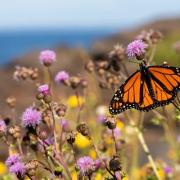
Mowing for Monarchs
Butterflies are a fan favorite when it comes to fluttering invertebrates, and in addition to their beauty, they bring a number of benefits to our lives. Butterflies play an important ecological role as prey to a number of larger species such as dragonflies and birds and are vital pollinators for wildflowers.
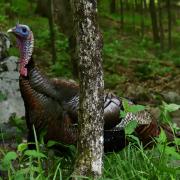
The Tick and Turkey Debate
Turkeys and ticks have long been a topic of conservation, with Maine’s wild turkeys sometimes taking the blame for causing problems for Maine’s moose as a spreader of ticks, the proliferation of ticks in Southern Maine, and the negative impacts on humans that come with the ectoparasite.
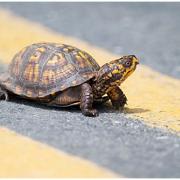
Turtle Crossing
Turtles are long-lived animals that take many years to reach reproductive ages, in the range of 10-15 years for many Maine turtles. Their delayed maturity coupled with low hatching success creates exceptional challenges for survival. The annual loss of just a few adults to roadkill can lead to a population decline or even local extinction.
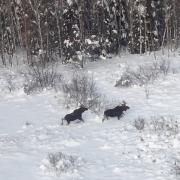
Monitoring Moose from the Skies
If you spent any time snowmobiling in certain areas of northern Maine this winter, you may have looked up to see a low flying helicopter scouting over the trees. This helicopter carried one Forest Pilot Ranger of the Maine Forest Service and three of Maine’s wildlife biologists, including the moose biologist, Lee Kantar on their annual aerial moose counts. From late December to mid-February, having snow on the ground allows greater contrast of moose on the landscape, making it easier to spot them while flying. The helicopter flies over specific sections in districts that best represent Maine’s core moose range and habitat.
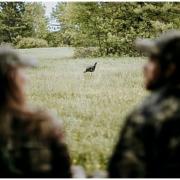
Understanding Spring Turkey Behavior + Scouting Tips
Spring turkey hunting is an excellent way to celebrate the end of winter. It’s a fun, interactive hunt, providing plenty of opportunity across the state. On March 24, the Department hosted a live panel discussion with three MDIFW staff members and avid turkey hunters: Turkey + Other Game Bird Biologist Kelsey Sullivan, Fisheries Resource Supervisor Liz Thorndike, and retired Rec Safety Coordinator Reggie Read.
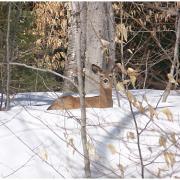
Winter Severity Index
Extended periods of deep snow and cold temperatures during winter can have a significant effect on the survival of white-tailed deer in Maine, especially in the northern part of the state. MDIFW has long recognized this relationship and has spent, and continues to spend, considerable resources in terms of workforce hours to collect information that helps us better understand this dynamic.
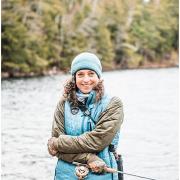
Women in Wildlife
I recently read an article by a female colleague celebrating women in science and how far we have come in how we are treated. Yes, we have made great progress, yet nearly every day I am reminded how far we must go.
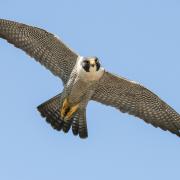
Peregrines and Partnerships
The peregrine falcon breeding season officially started on March 15, another sign that spring is approaching! Wildlife biologists and citizen science volunteers will begin monitoring some of the steepest cliff sides, buildings, bridges, and quarries in search of breeding pairs of peregrine falcons, a species that was once extirpated from the state of Maine.
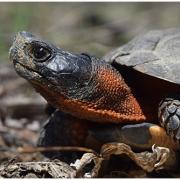
Maine’s Wild Winter
As temperatures drop well below freezing in our Northeast piece of paradise, Maine Department of Inland Fisheries and Wildlife biologists are heating up with project updates, innovative research, and vital partnerships. From mammals to mayflies, wildlife staff are collecting and analyzing data in a continuous effort to improve and monitor our state’s wildlife populations. Here’s a peek into some of their current work
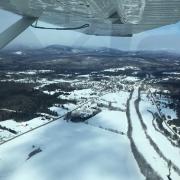
Surveying Deer Wintering Areas
It’s a cold, calm February morning when I meet Maine Game Warden Jeff Beach at the Norridgewock airport to go over our flight plan for the day. Jeff is one of three game warden pilots for the state. He arrived at the small airport earlier to fuel his Cessna for a day of survey flights. As a game warden pilot, Jeff patrols the state of Maine from the sky, but he also works on a variety of fish and wildlife projects, including stocking fish in remote ponds, eagle nest surveys, and tracking collared bears, deer, lynx and moose. Our flight today will focus on deer surveys.
Keep In Touch!
Enter your email or mobile number to receive the latest news from MDIFW.